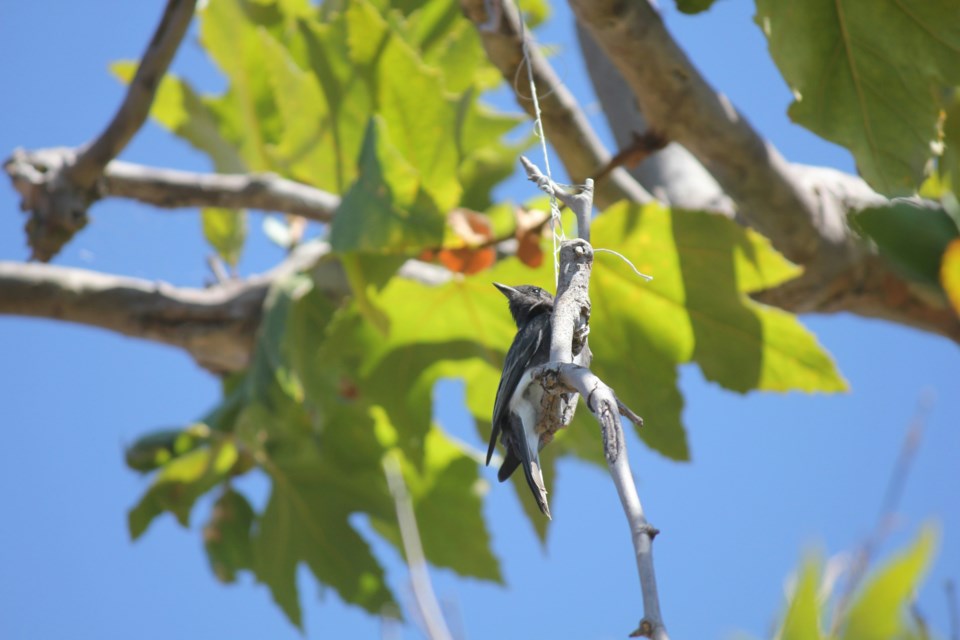Birding, like baseball, has an element of statistics to it. The experience of observing the birds comes first, followed by the record-keeping. Record-keeping can be on a personal level, for example, most birders keep a list of all the bird species they have observed either locally or worldwide. This is known as a Lifelist. Other list-keeping areas might be Canada, B.C., or the Sunshine Coast. These records can cover all years or just a single year. The all-time Sunshine Coast list since record-keeping commenced in 1971 is now 320 species. It becomes increasingly difficult to add new species as time progresses due to the law of diminishing returns. However, last year, 2024, was a good year in that three new species were added to the list.
The new species, all photographed, were eastern phoebe, common grackle and black phoebe. There are only three species of phoebes (flycatcher family) in North America, so it was ironic that two of them were recorded here for the first time in the same year. Eastern phoebe is a common summer visitor to much of North America east of the Rockies and only normally occurs in B.C. in the Peace region. Black phoebe is a bird of the extreme south-western U.S. and Mexico, commonly found in riparian desert habitat. There have recently been more records of the species in B.C., so it may be expanding its range northward (climate change?). Both phoebes were located in the vicinity of the Wilson Creek estuary, which has been a key location for rare species over many decades. Finders of the two species were John Hodges and Mari Petznek.
The third new species, common grackle, was identified from a photograph taken at the Sechelt Marsh on May 4 by Robyn Rietze. Grackles are in the blackbird family, normally only found east of the Rockies, and again only in B.C. in the Peace region.
Other than the first records above, there were other highly notable reports. A marbled godwit, identified and photographed at Mission Point on May 18 by Arnold Skei was only the second Sunshine Coast record. Godwits are large shorebirds with upturned bills, and this one strayed north along the Coast on its way to breeding grounds on the Prairies.
Four species were recorded for the third time: long-billed curlew at Brothers Park in Gibsons by Karen Holland, Costa’s hummingbird in the Chaster Park area of Gibsons, broad-winged hawk over Mt. Elphinstone by Arnold Skei, and western bluebird by John Hodges at Gospel Rock. All species were photographed. The western bluebird record was particularly significant, as the last report was 44 years previously.
There was one fourth Sunshine Coast record, a Swainson’s hawk seen over the airport by John Hodges in October. Honourable mentions also go to mountain chickadee, dusky flycatcher, clay-coloured sparrow, stilt sandpiper and brown pelican.
As 2025 begins, it’s time to begin the process over again. To report your sightings or questions contact me at [email protected] or 604-885-5539. Good Birding.



